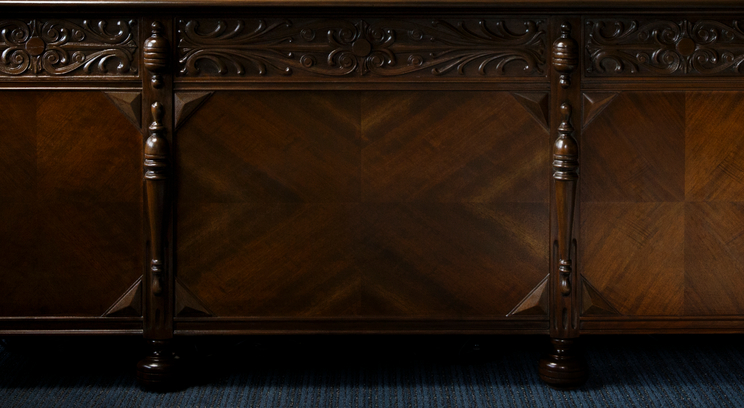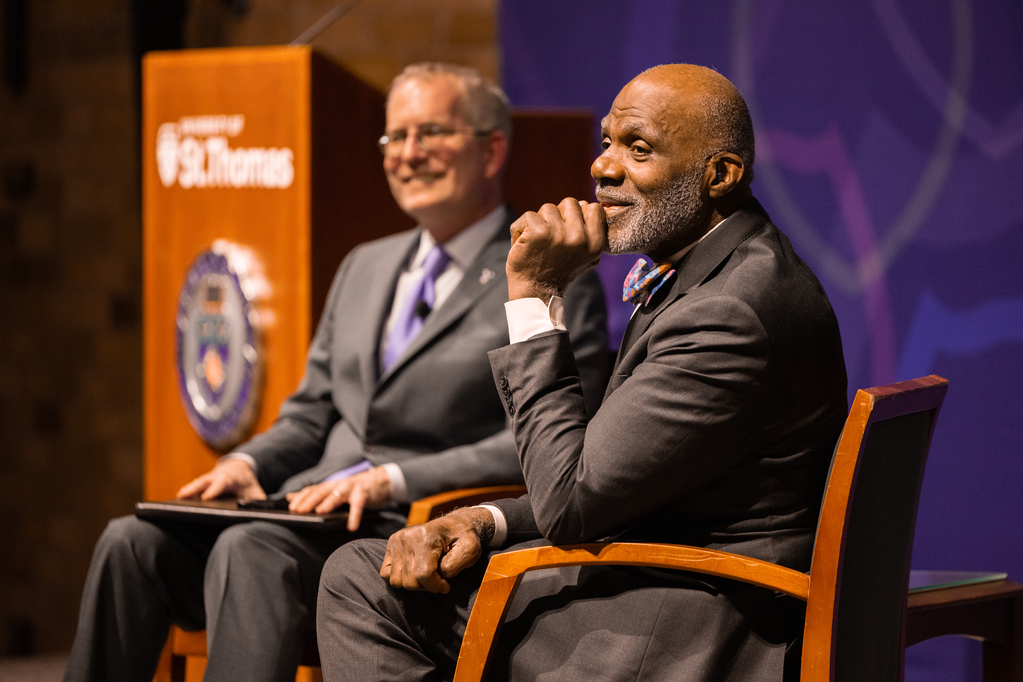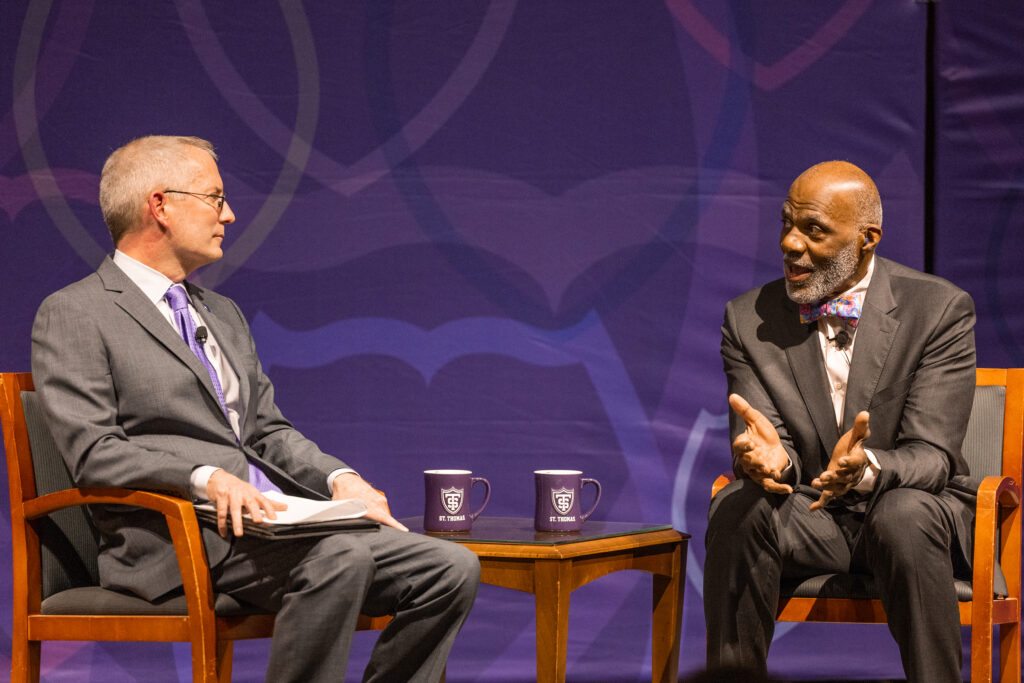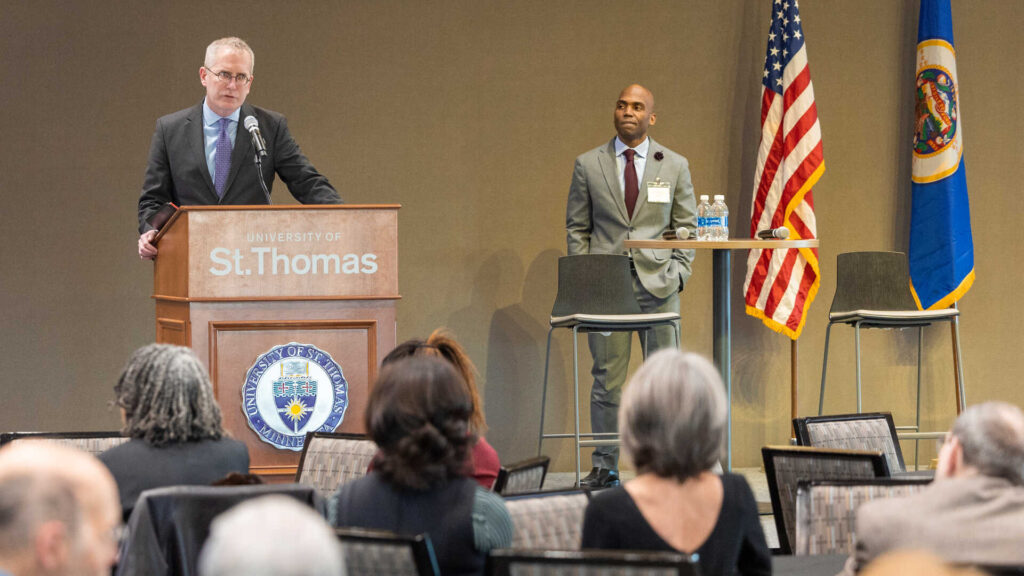Before Dr. Julie Sullivan arrived in July to begin her St. Thomas presidency, her office suite in 100 Aquinas Hall was renovated with new carpeting, drapes, ceiling and lights and a fresh coat of paint.
But she liked the wood furniture, including a desk, a bookcase, a conference table, a file cabinet, a stand and even a wastebasket. Years of constant use had taken their toll, however, so she decided to recondition all of the pieces.
Lonnie LeClair, owner of Advanced Furniture and Leather Repair in St. Paul, hauled everything away, and when he returned he advised Sullivan that the desk was valuable. How valuable and how old he didn’t know, but he saluted her decision to keep it and did a beautiful restoration job.
So how old was the desk? How many years had it been around?
It didn’t take long for Ann Kenne to find out.
The St. Thomas archivist and special collections director found a story in the May 26, 1933, edition of The Purple and Gray. Edward Percival, the student newspaper’s supervisor, originally wrote the story for The Ace, the magazine of the St. Paul Athletic Club.
Father Matthew Schumacher occupied the office at the time. He became president of St. Thomas in 1928, when the archdiocese reached a five-year arrangement with the University of Notre Dame to operate St. Thomas. Aquinas Hall, then known as the Liberal Arts Building, opened in 1931, and Schumacher moved from the Old Administration Building on the upper quadrangle.
A photo in The Purple and Gray showed Schumacher sitting behind the desk. Percival spared few adjectives in describing Schumacher’s new digs. The opening paragraph:
“Color harmony (and) simplicity of decoration, combined with pleasing proportion and true artistic design in keeping with the character of the medieval architecture, are carried out to perfection. The furnishings of the office are so blended as to faithfully represent the cultural characteristics of its occupant and the educational institution which he guides.”
Percival went on to describe cream-colored Venetian blinds, green mohair drapes and three-foot-high paneled wainscoting, which served “as a background for the well-chosen pieces of furniture.” The Jacobean Suite of oak furniture “was the first to be imported into this country in colonial times,” Percival wrote, “and had “a vital influence on the design of modern American furniture.”
He admired the “massive and beautifully carved” desk but considered the bookcase “the outstanding piece of the suite.” A copper rose chenille rug, when combined “with the dark stained oak of both the woodwork and the furniture, is extraordinarily effective and richly beautiful.”
The alcove on the east side of the room included the conference table and a hand-wrought iron lighting fixture. A similar fixture hung from the ceiling in the middle of the room. Both fixtures remain today; Sullivan moved the latter to hang above the table, which she switched with the desk, and put a larger top on the table to have more working space for meetings.
The room today retains an elegance that is characterized, Percival concluded, by “richness, combined with simplicity rather than ornateness … an office “of beauty and cultural taste.”







